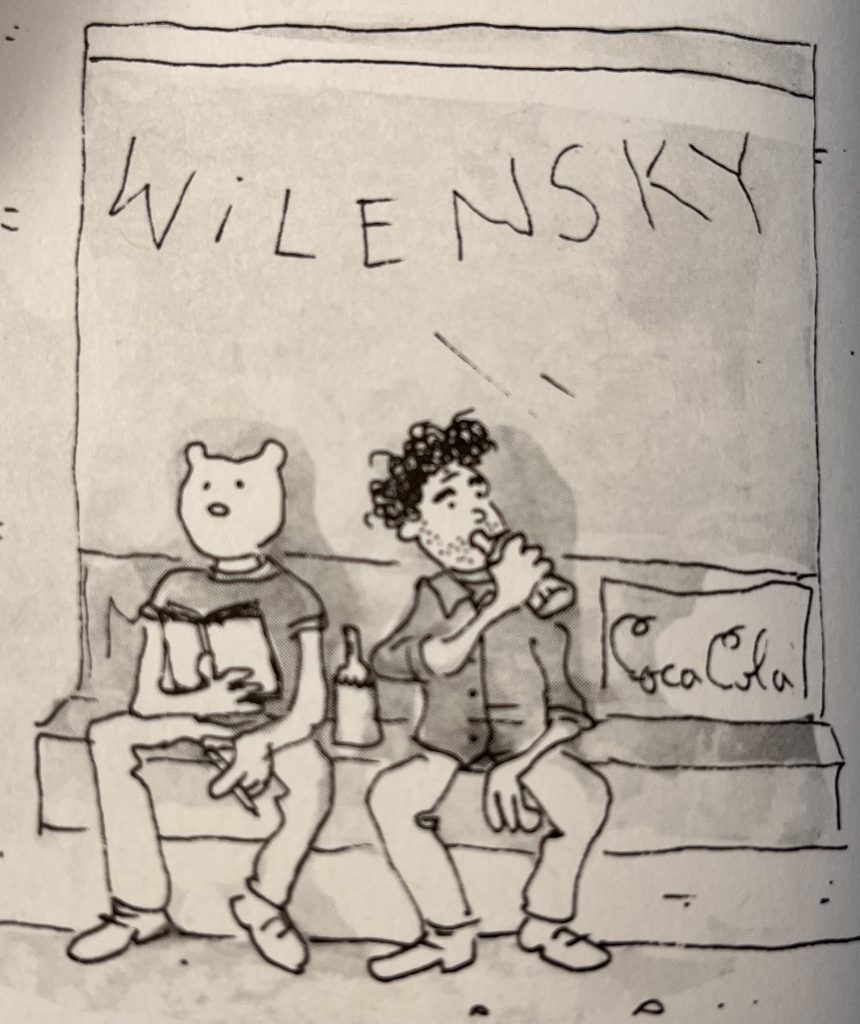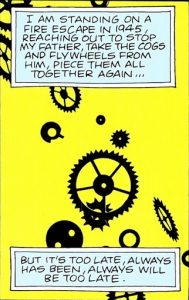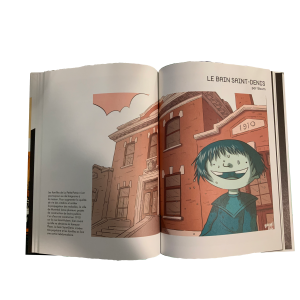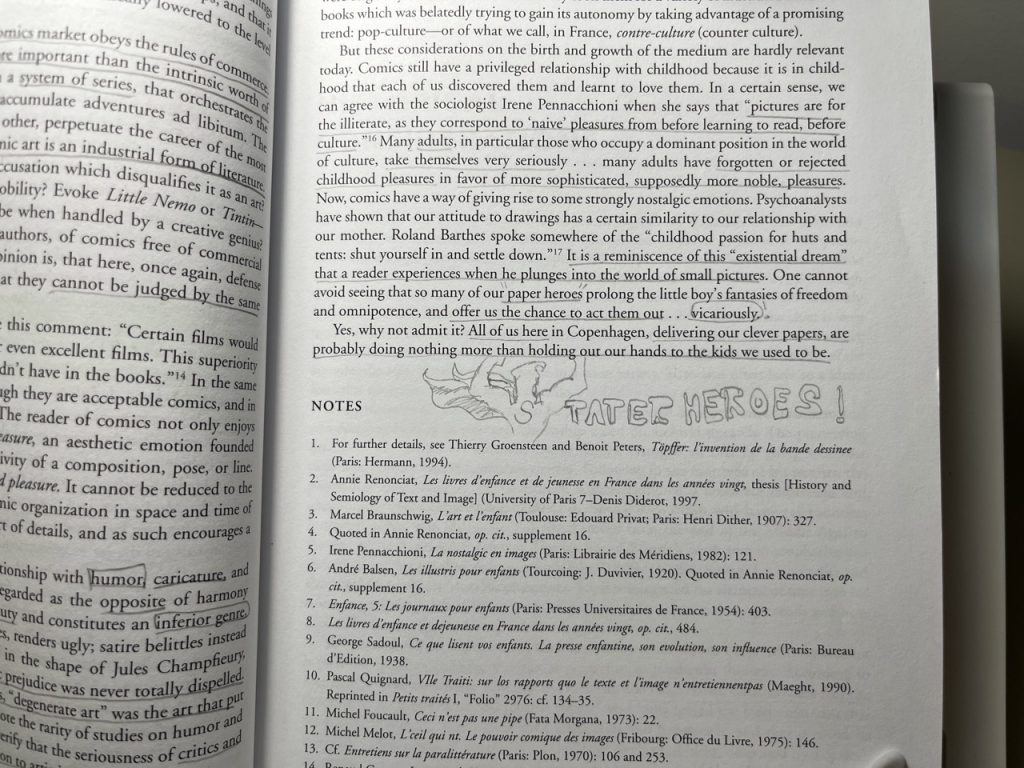


Is there any difference between a comic book and a graphic novel? If you enjoy reading comics, then you have come across people who call comics “graphic novels” to make them sound more important and give them legitimacy. But I am here to tell you that there is no difference, and the term “graphic novel” is an elitist and classist one. It’s okay to just call them comics, and I’m going to tell you why. So buckle-up, buttercup!
What is the difference between a comic book and a graphic novel?
Can you tell me what is the difference between a comic book and a graphic novel? Because I noticed that people who read comics most commonly use the term “graphic novel” when talking about various types of comics. Here’s a small list so you know what I’m talking about:
- Comics that tell a contained story or that is not part of a continuity.
- Comics that are part of a continuity, bu that were published in serialized form.
- Comics that are a compilation of comics published in serialized form.
- Comics that tell stories considered more important than the rest.
- Comics that adapt a book to comic book format.
- Comics written by distinguished authors.
- Autobiographical comics, usually in illustrated in black and white.
But why does this problem persist? People call “graphic novels” the comics that they want to be considered as fine art. It is a term that is used so that the comic is perceived as more prestigious than the rest of the comics published at the same time.
For example, an editor can promote a comic book as a “graphic novel” so that it is considered as a contender in a literary prize.
A university professor can refer to a compilation of comics as a graphic novel so that his students take the reading material seriously. Or, it can be something as mundane as calling a Batman narrative arc from a particular series as a “graphic novel” to be taken seriously by the community of superhero comic book readers.
Another variation of this phenomenon is when a compilation of comics published in newspapers or in web series format is printed in book format, and then sold as a paperback.
The other day I was reading a book with many essays about comics, one of them was written by Thierry Groensteen and has a section that has been marked in my brain since that day, and it goes something more or less like this:
“The question is why respect the forms of human expression separately, the first being reading (the model for all the narrative arts) and drawing (the comic, just like cinema, which is also a hybrid genre, goes against the ideology of purity that has dominated Western societies that focus on aesthetics.
In art, our modernity has never ceased to delve into each discipline, each one delving into its own specificity. For example, music and painting are focused on promoting their own domains.
That means that melody, subject, representation, narration, and meaning are eliminated and marginalized, in favor of working with basic materials and forms such as sound or color, in the search for pure music, pure poetry, or pure painting.
This ideology of purity has only widened the gap between erudite culture and popular culture. You can guess which one is dedicated to fiction and entertainment.
Another problem that comics have is their lack of narrative ambition, because they are considered easy literature, since they are based on repetition to make them easier to read and produce.
Comics are also associated with something known as paraliterature, a set of popular literary genres that include adventure stories, historical novels, fantasy and science fiction, erotic novels, among others. Comics obey the rules of the market, that is, the viability of the product is more important than the intrinsic value of art.
Another symbolic weakness of comics is their relationship with humor, caricature and satire.
Since the time of the Greeks, humor has been seen as the opposite of harmony and the sublime. It is not compatible with beauty and therefore constitutes an inferior gender. An extreme example is that for the Nazis, degenerate art put caricature instead of ideals.
And despite the fact that happened more than half a century ago, within the heart of academia, a similar prejudice persists. Critics and teachers exclude any comic or funny contribution to artistic creation.
As the sociologist, Irene Pennacchioni, says, “the images are for the illiterate, since they correspond to the naive pleasures of before learning to read, of before culture.
Many adults, in particular those who occupy a dominant position in the world of culture take themselves very seriously. Many adults have forgotten or reject the pleasures of childhood in favor of more sophisticated and supposedly nobler pleasures.”
Sorry for craming in so much theory into this little blog post, but sometimes you have to just take a deep dive into the subjects that you care wildly and deeply.
People call comics “graphic novels” to make them sound more important and give them legitimacy
What does it matter if people who read comics call them graphic novels? What are the dangers or implications of this?
Well, by doing this we are falling into the trap of thinking that there are two types of art, and that comics belong to the lower tier, or that they are not a form of artistic expression worthy of recognition, making it an inferior form of art, for an inferior and unrefined audience.
This reinforces the perception that comics are not a true literature, or true art in the same sense that a Van Gogh painting is art, or that a poem written in tweet format is not art.
The words and language we use to refer to our forms of expression determines our relationship with the objects and with the people who create them, as well as those who enjoy them.
What does this look like in the real world, outside of theory? Take as an example the publishing companies that publish books.
Both the 5 (now 4) large companies that function as a book cartel, and the hundreds of small publishers that survive thanks to government subsidies (at least here in Canada), and that if left to their fate in the free market that turns out that it is not so free, they would have disappeared years ago.
Throughout publishing there is the practice of calling any sequential work of art, or any comic a “graphic novel”, with the aim of presenting it as a work of fiction that is worth reading (and buying).
It also occurs that the same comic book readers present some comics that were previously published in a serialized way as a self-contained story.
Transforming it into a “graphic novel”, to bring it closer or make it look more like a book, so that the practice of reading comics is just as respectable as reading real books.
In a way, the individual issues in a series of comics function like book chapters. Perhaps you did not know this, but the practice of serialized publication of works of fiction is nothing new, in fact it dates back to the Victorian times in London in the 19th century.
The same thing happens with science fiction. Which some people like to call “speculative fiction,” so as not to be associated with the notion that science fiction as a literary genre is part of the popular culture, thus excluding it from the literary canon, which only has works respected and acclaimed by the academia and other distinguished people.
But who decides what it means to be a work of art? Well, we do! A clear example of this literary snobbery is how Margaret Atwood calls her works as “speculative fiction with elements of science fiction” so that it can be taken seriously by the rest of the literary community.
But can you blame her? Can you blame her for wanting to be taken seriously by a group of (mainly) men who control what is and what is not worthy of being art? Being a woman, and writing in one of the most despised genres by the academia, does Atwood have any other option than to play this game? A game that downplays the value of the genre in which she writes only to be taken seriously?
Another example may be Watchmen published by DC Comics. The company calls it a “graphic novel” because it is a self-contained story, and that was even part of the list of the 100 most important or influential books of Time magazine, something that put the comic book on the same list of other more “important” books and works of fiction. Keep in mind that DC itself also calls its own narrative arcs a “graphic novel” to sell them in a package that recollects single issues.
The truth is that there is no difference, “graphic novel” is an elitist and classist term.
There a magical place in North America called Quebec.
I have my opinions about the place and its people but we are not going to talk about it here, the only thing you have to know is that it is a place where most people speak French as a first language.
In Quebec the expression “graphic novel” is not used to mark a distinction between serialized and non-serialized comics, mainly because in Quebec there is no business model for publishing comic book series.
The market is very small for that. Instead, comics are published as stand-alone books, and even the few comic books that are part of a series are published in volumes right from the start, rather than in individual chapters.
So, what would be called a “Graphic Novel” in English, is simply called a Bande Dessinée, which means “comics” in French. Since there is no distinction between high or low art, fine art and, vulgar and popular art, it means that these comics are taken seriously by both their readers and their creators.
This doesn’t mean that when they translate their works for the rest of Canada and the United States, they don’t call them “”graphic novels.” But hey, you can’t have everything in life. You have to earn a little money after all.
But why should we change the way we talk about comics? For people who read comics, that is, you and I, we should stop calling them “graphic novels,” and just call them comics.
This way we can promote the fact that there is no difference between a comic book like that of Superheroes that is published every month, and one that is a self-contained story that is not part of a series.
The content and style will be different, but both have the same artistic value. One will be more commercial than the other, but that does not mean that one as a form of art is superior to the other.
If we use the term “graphic novel” to elevate some works of art above others in search of acceptance and legitimacy, then we are propitiating the myth that there is something like fine art and junk art.
I’m not saying that the “graphic novel” is junk art. I am saying that there is no good or bad art. But, I also understand that calling something a “graphic novel” can serve to classify it, although I am sure that we can find other terms for those purposes.
Many of the most recognized “graphic novels” are a mixture of documentary and autobiography, such as “Maus” and “Persépolis,” or “Vivos se los llevaron,” and these books, despite not being fiction, serve to publicize the lives and experiences of their protagonists.
So using the term “graphic novel” serves to give it visibility to an audience that otherwise would not have read the work simply because the word comics implies that it is something childish or vulgar, but that when encountering the term “graphic novel” they think it is something different.
Which gives the book a form of legitimacy that would otherwise be very difficult to achieve on its own.
But how do we achieve all this? In order to leave behind that need to seek legitimacy we have to accept that we do not need to separate comics into two groups.
That is, in one that is worth it and is a legitimate art form, and another group that does not deserve to be called real art and that consequently its creators are not real artists.
We have to accept that all comics, regardless of their duration, or their genre, or their author, or audience, have the same artistic value. Unless you are an artificial intelligence that only spits out words and plays with the probability of strings of words that follow other words. That’s not art. I’m sorry, it had to be said, whether it hurts whoever it hurts.
Conclusion: It’s okay to call them comics, just don’t be a classist snob.
Since their inception, comics have been in a constant search for legitimacy.
Their humble beginnings on the newspapers gave them the reputation of being something vulgar or popular, which does not deserve to be taken seriously, both by artists and academics who study literature and other forms of art, such as painting.
In order to achieve these forms of legitimacy which have been denied to comics, their creators and their readers have decided to call them “graphic novel.” However, this term that can give legitimacy and visibility to certain works of art, also causes there to be several tiers of art (and artists).
It creates the toxic notion that there is something like fine art and garbage art within the realm of comics. Continuing to call them “graphic novels”propitiates this way of thinking, and does not let us appreciate that all comics have the same artistic value, so please stop calling them “graphic novels” and just say that you like to read comics.
If someone tells you that those are not real books then he, she, or they are being classist and elitistist, and you have not only the right, but the obligation to call them out on their snobbery.
Share this article with your snobbish friends on social media!

Here are some additional readings from the book I was talking about earlier.

Leave a Reply
You must be logged in to post a comment.